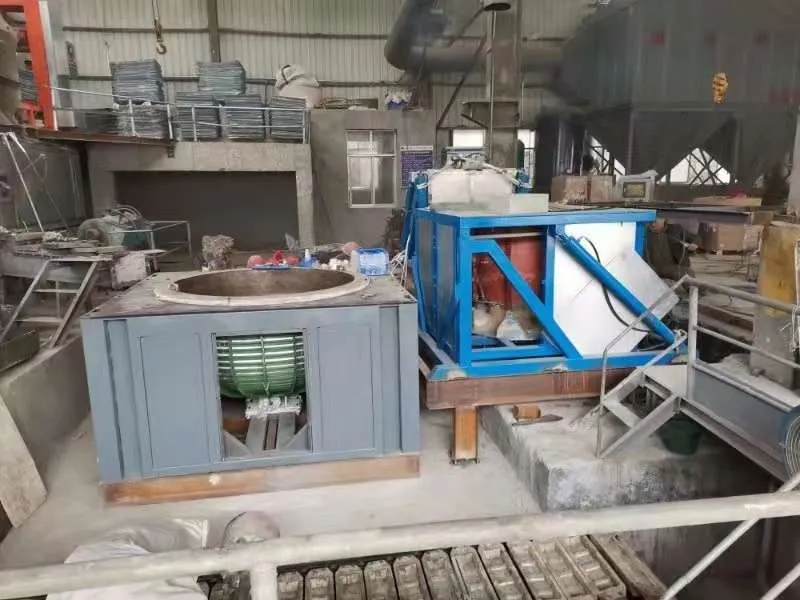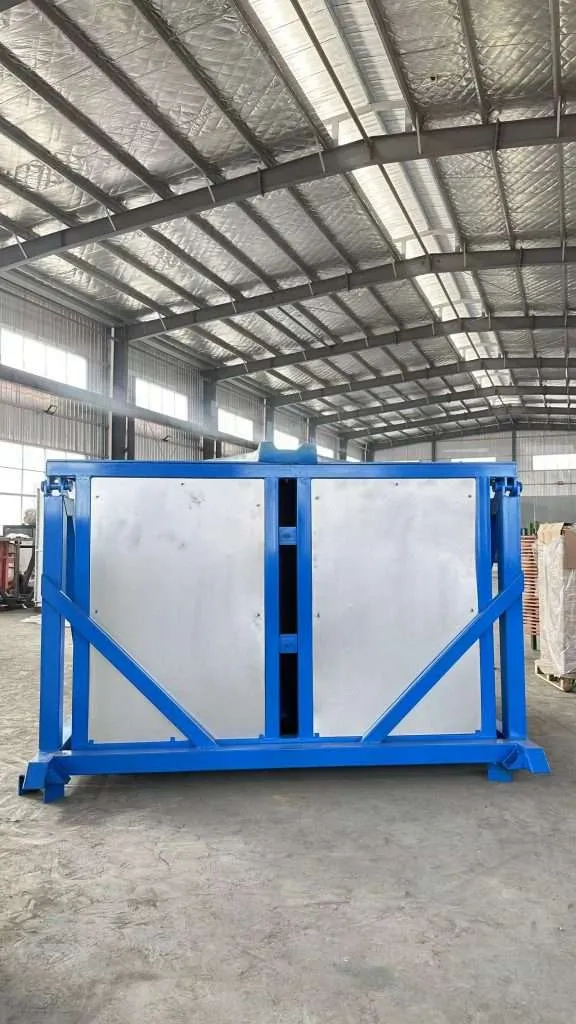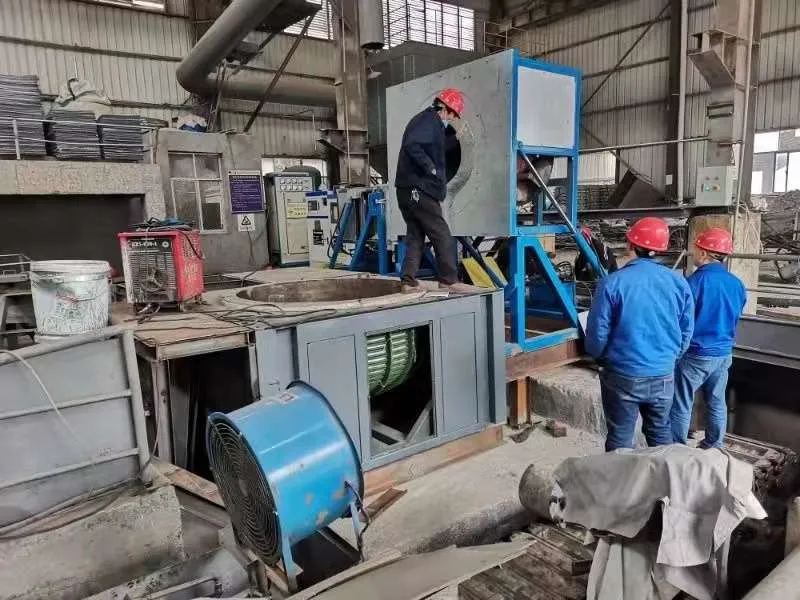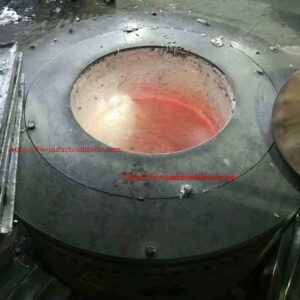-
1/7
-
2/7
-
3/7
-
4/7
-
5/7
-
6/7
100-5000kg Electromagnetic Induction Tin Melting Furnace
Electromagnetic Induction Tin Melting Furnace: Efficient and Precise Melting for Your Needs
In the world of metal casting and processing, induction tin melting furnaces have revolutionized the way industries melt and handle tin. These advanced furnaces utilize the power of electromagnetic induction to efficiently and precisely melt tin, offering numerous benefits over traditional melting methods.
methods.
What is an Induction Tin Melting Furnace?
An induction tin melting furnace is a modern melting solution that uses high-frequency alternating current to generate a magnetic field. This magnetic field induces eddy currents in the tin, causing it to heat up and melt rapidly. The process is highly efficient, as the heat is generated directly within the metal itself, rather than relying on external heat sources.
Advantages of Induction Tin Melting Furnaces
- High Efficiency: Induction melting is an incredibly efficient process, with up to 90% of the energy being directly transferred to the tin. This results in faster melting times and lower energy consumption compared to traditional gas or electric furnaces.

- Precise Temperature Control: Induction furnaces offer precise temperature control, allowing operators to maintain the desired temperature throughout the melting process. This level of control ensures consistent quality and minimizes the risk of overheating or burning the tin.
- Clean and Safe Operation: Induction melting produces no emissions or pollutants, making it an environmentally friendly choice. The absence of open flames or combustion also enhances safety in the workplace.
- Compact and Versatile: Induction furnaces have a compact design, requiring less floor space than traditional furnaces. They are also versatile, capable of melting various grades and alloys of tin.
Applications of Induction Tin Melting Furnaces Induction tin melting furnaces find applications across diverse industries, including:
- Electronics: Tin is widely used in the electronics industry for soldering and creating alloys for electronic components.
- Automotive: Tin alloys are employed in the production of various automotive parts, such as bearings and bushings.
- Aerospace: The aerospace industry uses tin in the manufacture of high-performance components and coatings.
- Jewelry and Arts: Tin is a popular material in the creation of jewelry, sculptures, and other artistic pieces.
Choosing the Right Induction Tin Melting Furnace When selecting an induction tin melting furnace, consider factors such as melting capacity, power output, energy efficiency, and safety features. It is also essential to choose a reputable manufacturer that offers reliable equipment and excellent customer support.
Maintenance and Care of Induction Tin Melting Furnaces To ensure optimal performance and longevity of your induction tin melting furnace, regular maintenance and care are crucial. Here are some key aspects to consider:
- Crucible Care: The crucible is a critical component of the furnace, holding the molten tin. Regularly inspect the crucible for any signs of wear, cracks, or damage. Replace the crucible when necessary to prevent contamination and ensure efficient melting.
- Coil Maintenance: The induction coil is responsible for generating the magnetic field that heats the tin. Keep the coil clean and free from debris. Periodically check the coil for any signs of damage or wear, and replace it if needed.
- Cooling System: Induction furnaces rely on a cooling system to regulate temperature and prevent overheating. Ensure that the cooling system is functioning properly and maintain it according to the manufacturer’s guidelines.
- Regular Cleaning: Keep the furnace and its surroundings clean and free from dust, dirt, and debris. This helps prevent contamination of the molten tin and maintains a safe working environment.
Advancements in Induction Tin Melting Technology As technology progresses, induction tin melting furnaces continue to evolve, offering even greater benefits to industries. Some of the latest advancements include:
- Improved Energy Efficiency: Modern induction furnaces feature optimized designs and advanced power control systems that further enhance energy efficiency, reducing operating costs.

- Remote Monitoring and Control: Some induction furnaces now offer remote monitoring and control capabilities, allowing operators to monitor and adjust the melting process from a distance. This improves convenience and safety.
- Integration with Automation: Induction furnaces can be integrated with automated systems, such as robotic arms or conveyor belts, streamlining the entire tin melting and casting process.
The Future of Induction Tin Melting As industries continue to prioritize efficiency, precision, and sustainability, the demand for induction tin melting furnaces is expected to grow. With ongoing research and development, we can anticipate even more advanced features and capabilities in future induction melting technologies.
Induction tin melting furnaces have already proven to be a game-changer in the metal processing industry, and their potential for further improvement is immense. By investing in these cutting-edge furnaces, businesses can position themselves at the forefront of their respective industries, ensuring efficient, high-quality tin melting for years to come.
In conclusion, Induction tin melting furnaces offer a superior melting solution for industries working with tin. With their high efficiency, precise temperature control, clean operation, and versatility, these furnaces are an excellent investment for businesses looking to streamline their tin melting processes. By embracing induction technology, manufacturers can enhance productivity, reduce costs, and improve the quality of their tin products.induction tin melting furnaces offer a superior melting solution that combines efficiency, precision, and environmental friendliness. As technology advances, these furnaces will continue to revolutionize the way industries melt and process tin, driving innovation and setting new standards in the world of metal casting and processing.












